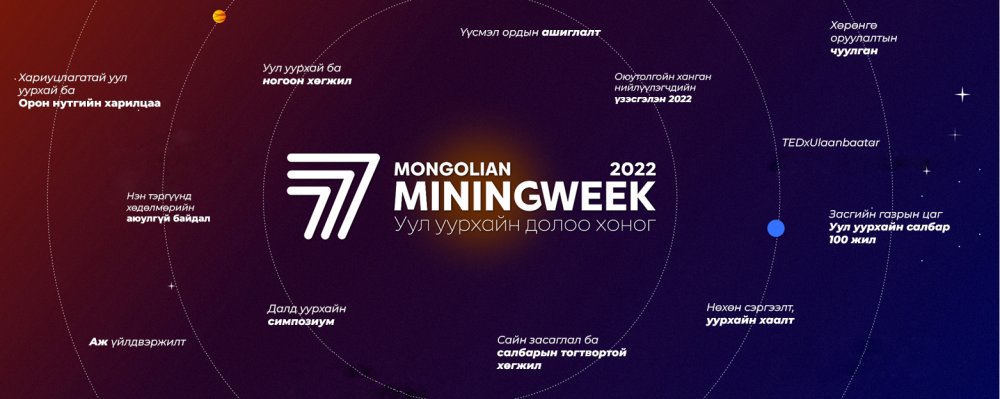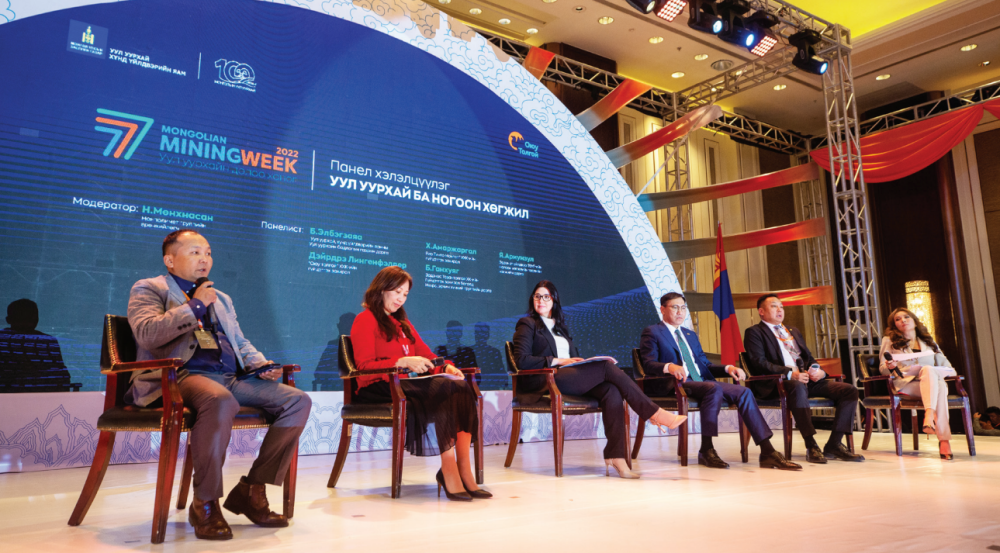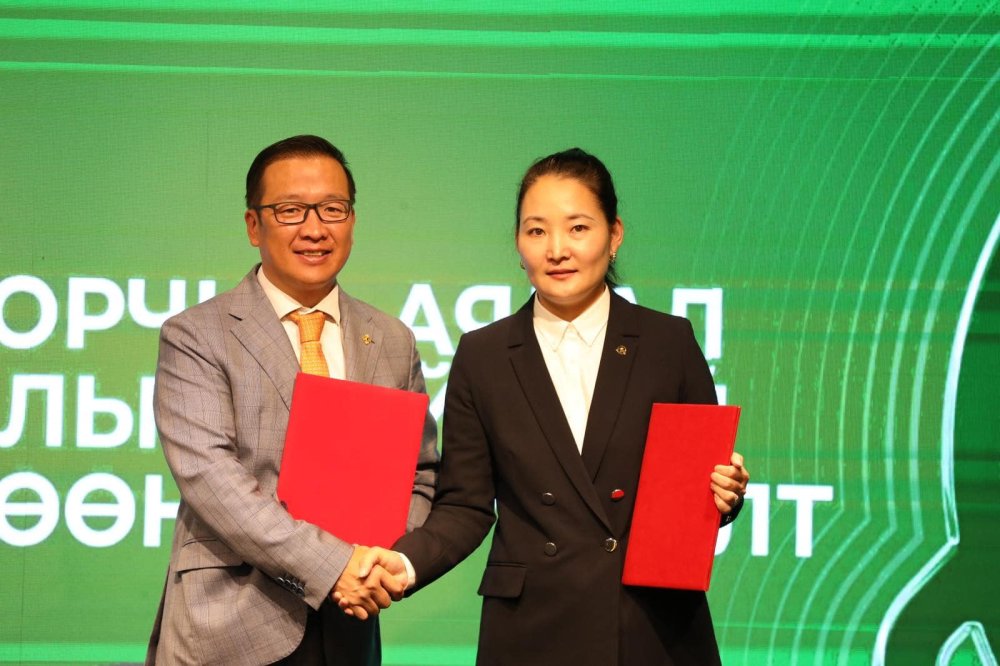ODJARGAL.E
On a global scale, about 37 gigatonnes of CO2 is emitted from energy demand per year, while mining production generates 10 gigatonnes. This is the basis for the clean energy transition. The demand for copper, aluminum, nickel, cobalt, and lithium is growing sharply, indicating a strong global commitment towards a green economy. New technology and equipment to curb climate change, basic metals, and raw materials for green production are created from mining products, however, the industry is considered the “dirtiest”. The strict criteria and requirements of ESG and the adaption of advanced, innovative, pioneering technologies, and innovations indicate that mining is, without a doubt, an industry that will polish the green development efforts.
As the blue planet has warmed rapidly in the last five years, natural disasters have become more frequent in greater numbers. Therefore, the concept of balance between environment, society, and governance is becoming increasingly popular among countries. While only 20 percent of S&P 500 companies were issuing sustainability reports in 2001, the numbers rose to 92 percent by 2022. David Oswald, President of Design and Environment Consultancy, said in his presenta tion that ESG criteria are “pressuring” companies to be more responsible. Greenhouse gases are similar to water vapor in that they absorb heat slowly and are not harmful. However, due to global warming, outbreaks have been limited to prevent disasters.
J.Zoljargal, Executive Director of the Mongolian Coal Association, defines green development is about reducing greenhouse gas emissions. 197 countries have joined the Paris Agreement to limit global warming to 1.5 degrees Celsius. By 2030, Mongolia is expected to emit 74 million tonnes of greenhouse gas, and as a result of taking certain measures, it has promised to reduce it to 57 million tonnes. In the same period, it is estimated that the greenhouse gas emissions from the country’s industrial sector will reach 12 million tonnes. So, the two opposing goals of developing heavy industry and reducing greenhouse gas will go hand in hand. At the time when such responsibility is being imposed, the Minister of Environment and Tourism B.Bat-Erdene raised the issue of rehabilitation at the conference. He said, “Mining companies, state administrations, and all stakeholders should make sustainable development a top priority, and then prove their commitment to developing responsible mining. Today, 28,000 hectares of land have been damaged by mining and widespread mineral extraction in Mongolia. There are 21,000 hectares with responsible owners, 7,000 hectares that have been abandoned by licensed enterprises, and 7,000 hectares that have been left unoccupied due to the activities of artisanal miners.
“The Ministry of Environment and Tourism will strictly follow the policy to push rehabilitation at all stages, from the first stage of the mining project to the closure of mining and the settlement of land payments.” B.Elbegzaya, Head of the Mining Policy Department at the Ministry of Mining and Heavy Industry (MMHI), said that during the 100-year history of Mongolia’s mineral resources sector, the legal regulation of mining operations and rehabilitation has been carried out in stages, and environmental standards have been implemented at the national level. He mentioned that rehabilitation has been the center of discussion up until now, but the focus will be on the green development of mining starting next year. If the mining industry does not go green… it is clear that international energy prices will increase by at least 20 percent. Currently, industrialized countries have undertaken the responsibility of the “Clean Development Mechanism” and it will be implemented worldwide. China and the European Union have started imposing taxes on greenhouse gas emissions. If the tax hits 50 euros per tonne in Germany, it will increase to USD 170 in Canada. Such methods are expected to be adopted in all countries eventually. It means paying taxes more than the price of coal at the mine.
Mongolia’s mining industry consists of all the GHG emission sources, including coal, methane, electricity, diesel fuel, chemicals, production, and waste. So, the taxes will be equally higher in the future. Since the country intends to develop heavy industry based on mining, it is necessary to consider and plan the reduction of GHG emissions. Optimizing the mine’s internal transportation system, simplifying the stages of the concentration plant, and focusing on saving water use can reduce energy consumption by 20-40 percent. Many solutions are available to reduce GHG emissions. It is common to bury GHG underground in chemical industries such as oil refineries. Or there is an alternative of mixing them into the oil layer. Water is pumped to extract oil. Instead, the use of GHG has the doubled advantage of increasing oil production by 20 percent and saving water in the process. Also, foreign-invested companies are implementing projects the research on producing clean energy by extracting methane gas levels in Umnugovi province. “Erdenes Tavan Tolgoi” methane gas power plant with a capacity of 500 MW has completed the feasibility study and is expected to be put into operation in 2025. The company, the leading producer of coal in Mongolia, has set a goal of transitioning 30-45 percent of its total electricity consumption into renewable energy and gas. “Erdenes Tavan Tolgoi” has planned a high-efficiency, low-cost electric transportation, and belt conveyor solution.
A complete continuous conveyor belt system will be fully implemented in 2024. Driverless and elec tric vehicles will be used in mining operations. The Tavantolgoi-Gashuunsukhait railway line financed by the company with MNT 1.9 trillion will start soon. In terms of a solution to drastically reduce GHG emissions from heavy-duty vehicles, railways are considered eco-transport. This year, Mongolia will take a big step towards achieving its promise with the opening of railways in three routes. Engineer J.Zoljargal explains that renewable energy adaptation is difficult in mining activities. Starting with half-full panels and large-capacity batteries to create a solar source powered by powerful and bulky motors, is expensive. Of course, one important solution is to produce “green air” by planting trees in mining areas. Well-renowned mining companies have committed to planting over 600 million trees within 10 years under the national program “One Billion Trees” initiated by the President of Mongolia. Currently, the Moncement plant is leading the way in green solutions in the industrial sector. Electricity is produced from waste heat and used for daily operations. By using industrial gray water, 85,000 tonnes of GHG emissions were prevented from being released into the air. Monpolymet Group President N.Munkhnasan also informed that the company has planted 250,000 trees over the past 30 years. Mongolia supplied a maximum of 7.5 million seedlings in a year for domestic consumption.
Erdenes Tavan Tolgoi, which is responsible for planting the largest number of 180 million trees, needs 120-150 million seedlings. In this regard, the construction of Agro parks with renewable energy drip systems in Selenge province, Ulaanbaatar city, Zuunbayan bagh, and Tsogtsetsii soum will start next Spring. Deirdrй Lingenfelder, CEO of “Oyu Tolgoi” LLC, said, “The core of our company’s operations and policies is ‘sustainable mining and green development’.” “We are continuously conducting research and organizing events to change our business model, reduce GHG emissions, and reduce our footprint on the environment to the lowest possible level,” she remarked. As for the industry that uses groundwater in the Gobi region, OT reuses 88 percent of its water consumption. OT LLC has committed to planting 100 million trees, and so far this year, the company has planted 100,000 trees. As for Rio Tinto Mongolia, the company signed an agreement to implement the “Healthy Forest” project in cooperation with the International Conservation Caucus Foundation (ICCF). This is the first project of the “Climate Change and Desertification” collaboration between the group and the Ministry of Environment and Tourism, and it will be implemented within the framework of the “One Billion Trees” national program. However, the company will not plant new trees and will engage more in protecting trees and forests. The objective is to protect a total of 1.1 billion trees to immunize the forest basin in the long term. “Rio Tinto Mongolia” will finance MNT 7.5 billion for the threeyear project.
The “Healthy Forest” project will also focus on training and strengthening capacity in forestry. In 2018, Rio Tinto was the first mining company in the world to withdraw from the coal business. This was the first step in reducing the GHG emissions of the group’s overall operations. On top of that, Rio is implementing 3-stage measures to reach net zero emissions. Rio Tinto Group’s aluminum mine in Canada has reduced GHG emissions by 60 percent by using renewable energy. Kh.Amarjargal, Country Director for Mongolia Rio Tinto Mongolia’s COO mentioned that introducing such experience in Mongolia and developing renewable energy as a country with rich natural solar and wind will be a great impetus to reduce GHG emissions. White dust generated by the filling of waste dams has been a focus of discussion for many years. This has been reflected in the government’s action program for the expansion of the Erdenet Refinery. The plant is installing a waste-thickening technology. In addition, the waste fund will be expanded with a solution that does not generate white dust. According to E.Ochirsuren, the forest engineer in charge of tree plantation in the plant’s Green Development Project Unit, elm tree seeds were planted on 8,000 km of land as part of the action to reduce white dust.
Also, green facilities are being created on 50 hectares of land. Erdenet Plant is the first in Mongolia to establish a Forest Genetics Center. The center will create a tree seed bank, preserve, and project seeds of genetic resources, tissue propagation, and provision of seedlings for public use. The company is now planning to plant 100 million trees as part of the “Green Development” project. In addition, a fully automatic Tree Breeding Center will be established on 100 hectares, where one person can grow the same amount of seedlings. 10-121 million saplings are grown here annually, as well as bees, fish, and fruits. Fertilizer is produced using organic waste. In general, there are very few human resources in the forest management field in Mongolia. Few students study this profession. There is a shortage of forestry experts at the Ministry of Environment and Tourism. Managers of major companies who participated in the “Mining and Green Development” panel meeting pointed out that specialists trained in Agricultural University lack the experience and knowledge of planting trees in the Gobi region. There is insufficient government support or incentives for enterprises that have made savings in the mining, extraction, and industrial sectors and directed their activities toward green development. B.Elbegzaya, the head of the Mining Policy Department of the MMHI, agreed that the upcoming legal reform address this issue. The MMHI has voted to include certain tax incentives in the revision to the Minerals Law to encourage the use of yellow flood water in production.
At the “Mining and Green Development” conference, representatives of government organizations and executives of large national companies gathered together to discuss complex environmental issues. In particular, in line with the global trend of green development, companies redefined their policies and strategies, and while some of them were preparing to implement them in their operations, they openly exchanged opinions about the problems faced by all of them.
























